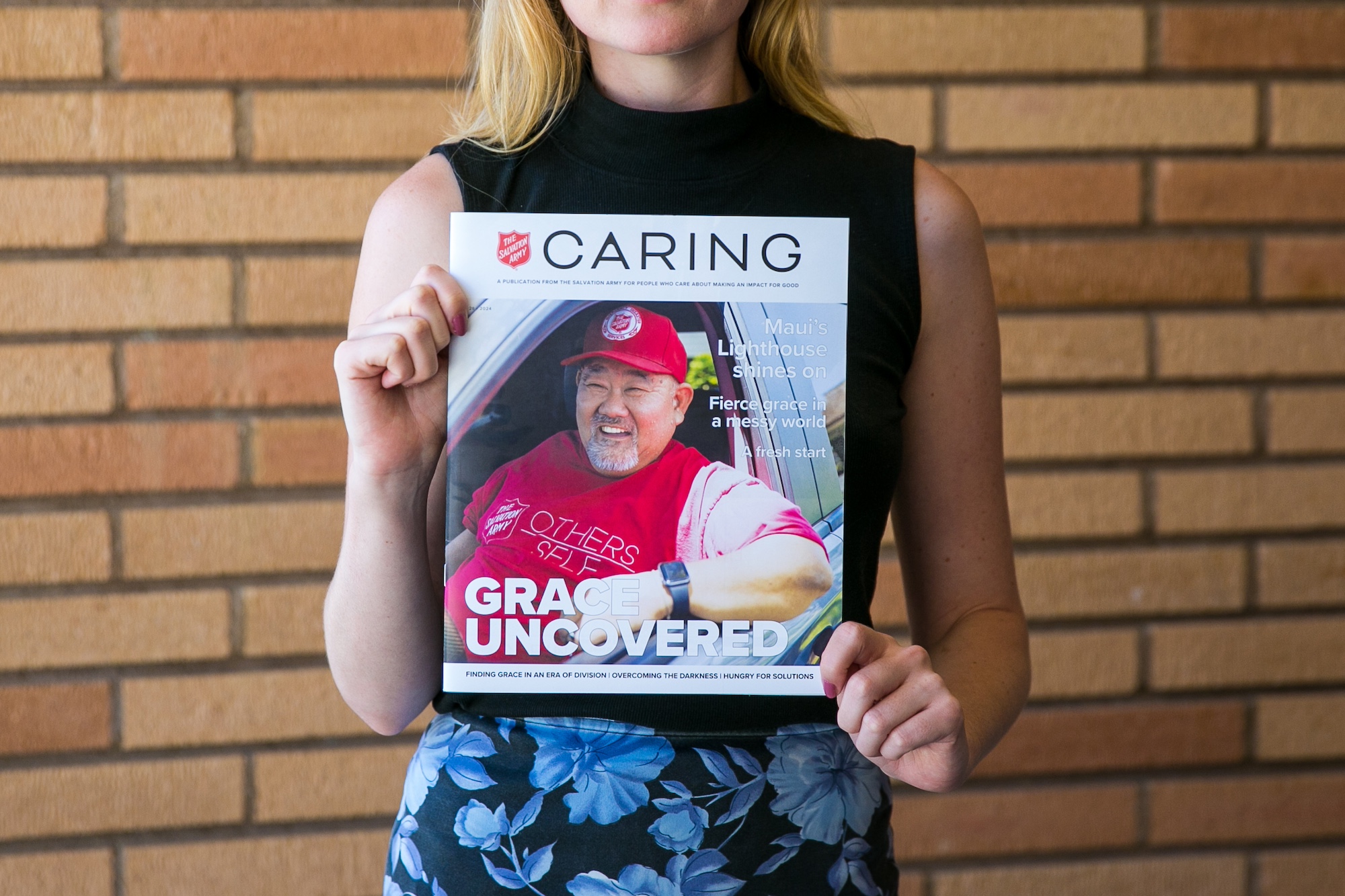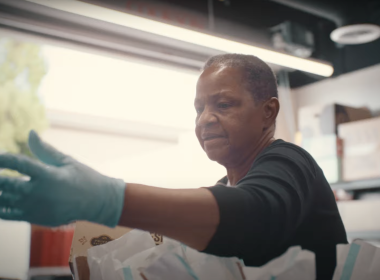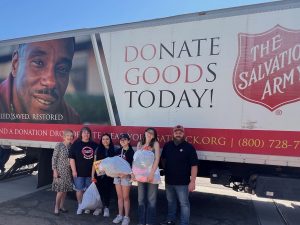A Q&A with Territorial Executive Director of Development Maria Todaro.
In 2023, The Salvation Army provided more than 9 million meals, 3 million nights of lodging and 2 million vouchers for needs, including groceries, clothing and utility assistance across the Western Territory’s 13 states, Guam and Micronesia.
Those efforts are largely supported by hundreds of dedicated communications and fundraising professionals who are engaging with donors and raising funds and awareness to fund the mission. The Territorial Community Relations and Development (CRD) Department, supports these efforts that secure approximately $215 million each year in outright contributions, and another $200 million in deferred commitments secured by the Gift Planning team. The USA Western Territorial CRD team is stacked with subject matter experts with deep experience, knowledge, education, tenure with The Salvation Army and passion to help others. They work tirelessly to support those in the divisions by providing resources, training, best practices and strategic consultation.
At the helm is Maria Todaro, who began her role as Territorial Executive Director of Development July 1.
Todaro brings nearly 20 years of experience with The Salvation Army to the position, having started her journey at The Salvation Army Ray and Joan Kroc Corps Community Center in San Diego when it was the only Kroc Center, and most recently as the Territorial Director of Corporate Engagement, a role she held for nearly a decade. Through it, she led efforts that resulted in relationships with corporations, including Mattel, AT&T, In-N-Out, Home Depot and Dignity Health. Additionally, she served as chair of the National Corporate Relations Task Force, advocating that other territories bring on the position, and working with them to create assets, tools and resources for the field.
“We’re excited that Maria has taken the helm of the CRD Department. She brings with her an expertise in her area of fundraising and a great passion for the ministry of The Salvation Army and the services we provide,” said Western Territorial Commander Commissioner Douglas Riley. “We’re looking forward to new, innovative and creative methods to grow resources that will be available to provide for the programs and services throughout the Western Territory. She’s full of energy and brings excitement, which will be a valuable resource as she leads the Community Relations and Development team onto even brighter days in the years ahead.”
Caring spoke with Todaro about her journey to her new role and a look at the road ahead.
What led you to begin working for The Salvation Army some 18 years ago?
My background is in journalism. I was working in television news in San Diego producing the evening news for the CBS affiliate. It was a challenging and rewarding career, but I started feeling like I was part of exploiting people’s hardships, and that didn’t sit well with me. Instead of putting a camera in front of someone at the worst moment of their lives, I really wanted to jump in and help them heal and rebuild. I didn’t know that you could make a living working in a nonprofit until I was in my 20s and toured a youth shelter for children who had aged out of foster care in San Diego.
There, a woman, Jan, took me around. As she was walking around, she’s talking, and I asked her, ‘Is this your job? Do you get paid to do this?’ And she said, ‘Yeah.’ That stuck in my mind and after four years in television news, I started looking for a nonprofit job in 2006. I saw a Development, Marketing and PR coordinator position at the San Diego Kroc Center. It was the first and only Kroc Center then, and was in its first few years of existence, and I remember I made a little frame for my cover letter with words about community, faith, hope and loving others all around the mat border. And later, the person who would be my boss told me ‘I just had to see who did that.’ Funny enough, that quirky little touch is why I got an interview and how I arrived at The Salvation Army.
Bring us along on your journey with The Salvation Army. What roles have you held over the years?
When I was at the Kroc Center, our Development Director left, and we didn’t have anybody in the chair for about eight months. It was a long time. As the Development, Marketing and PR Coordinator, they asked me to fill in as interim director. I was a journalist before—I had no experience in the nonprofit sector. I’d be in the executive committee meetings, and they’d be talking about operational and budget issues I didn’t fully have a grasp on. So, I went back to school and got my master’s in nonprofit leadership and management from University of San Diego.
I eventually ended up serving as the Communications and Community Development Director and worked with an excellent team to build a culture of philanthropy there. In 2014, Territorial Headquarters posted a job focused on proactively cultivating opportunities with corporations across divisional boundaries and developing a professionalized corporate program. I prayed about it and felt peace that if it was his will for my life, I would make the move from San Diego to Long Beach without hesitation. I’m so grateful it was.
What opportunities do you see for The Salvation Army today?
There are so many. The world is changing really fast and I feel like there’s two big things happening at once that are having a significant impact on development. First, technology is evolving every day to allow us to reach donors in a highly personal and engaging way both online and offline. At the very same time, in this very digital world and post-pandemic, personal face-to-face interactions are becoming more novel and appreciated. People don’t talk to each other face-to-face as much anymore.
I think it’s interesting, because we’re leveling up on technology to reach new donors and engage audiences, but it’s never been more important or meaningful to donors as it is now that we show we truly care about them by inviting them to engage with us. We want to show them the mission, we want them to come and volunteer, we want to sit in their home and talk to them and meet their dog and see the photos of their children and grandchildren. We want to have that personal relationship and to help connect them to opportunities to make the impact they want to make.
Companies and nonprofits are highly customizing their tech and really leaning in on that side. And I think what’s going to start differentiating us is that The Salvation Army is always going to care about people and human interaction. “Heart to God, Hand to Man” is who we are, and we will always be a people-first organization. So it’s important to never lose sight of that as we level-up on the technology side to build connection and efficiencies.
Ultimately, these efficiencies will allow fundraisers to spend less time on mundane tasks and more time out in the field connecting people to the mission while also upleveling our ability to connect with those who don’t want to meet with us in person in a way that feels personal and relevant to their interests. The opportunity is leveraging the tools and resources we have to build more intentional and meaningful relationships with those who invest in our mission or who may be inclined to in the future.
What do you love about The Salvation Army?
I love our mission. I love that we meet human needs in God’s name without discrimination. I love everything that that stands for, and everything that it is in practical application. The fact that our officers and staff are out there dedicating their lives to the hard work of sitting with people through their pain and suffering, praying with those who are grieving or lost, finding ways to get people into a better situation and working with them toward that and literally changing people’s lives through love. The Salvation Army really walks the walk and loves people exactly as they come. I think the fact that this organization is led by officers who have dedicated their lives to serving in God’s name, it just changes things. There’s such a deep level of authenticity and spirit to what we do because of that.
Anything else you’d like to add?
I’m completely humbled and grateful for this opportunity. I get to work alongside some of the most dedicated, creative, intelligent and passionate people to help strengthen the mission and service of an organization I love. I’m grateful for The Salvation Army’s investment in its people and I’m a living example of that.
Do Good:
- You’ve probably seen the red kettles and thrift stores, and while we’re rightfully well known for both…The Salvation Army is so much more than red kettles and thrift stores. So who are we? What do we do? Where? Right this way for Salvation Army 101.












